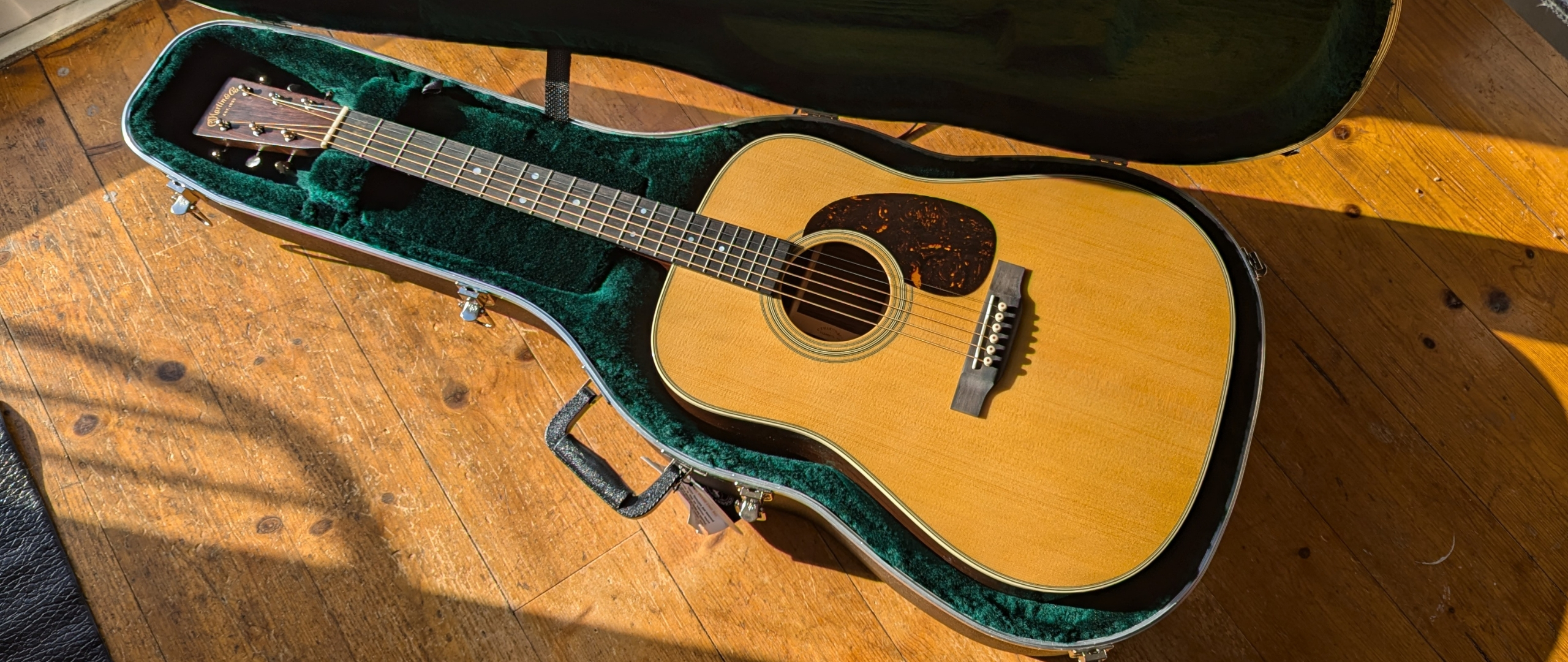
For those of us clued up on guitars, the Martin D-28 needs no introduction. Probably the most iconic acoustic guitar of all time, you’ll have seen it in the hands of music legends like Bob Dylan, Jimmy Page, John Frusciante, Noel Gallagher, and many more. It’s got a storied history to go with its iconic fan club, and that’s part of why it commands such a huge price point.
If you’ve never encountered one before, let me give you a quick history lesson before we get into the guts of this review. First presented by Martin in 1931, it’s a square-shoulder dreadnought that eventually became so popular post-WWII that there was a two-year waitlist to get one. It’s prized for its excellent projection, which was particularly useful at a time when acoustic guitars didn’t come with electronics, and coupled with Martin’s famed build quality, became a favorite of guitar players across the globe.
Whether it was country, rockabilly, or bluegrass, right through to modern styles like grunge and hard rock, its tonal versatility knew no bounds, and the D-28 found a place across the spectrum of music. It’s a legend in its own right, but we’re in 2024 now, and you can get a lot of guitar for relatively little money. So does the D-28 still justify its huge cost? Time to find out.
Features
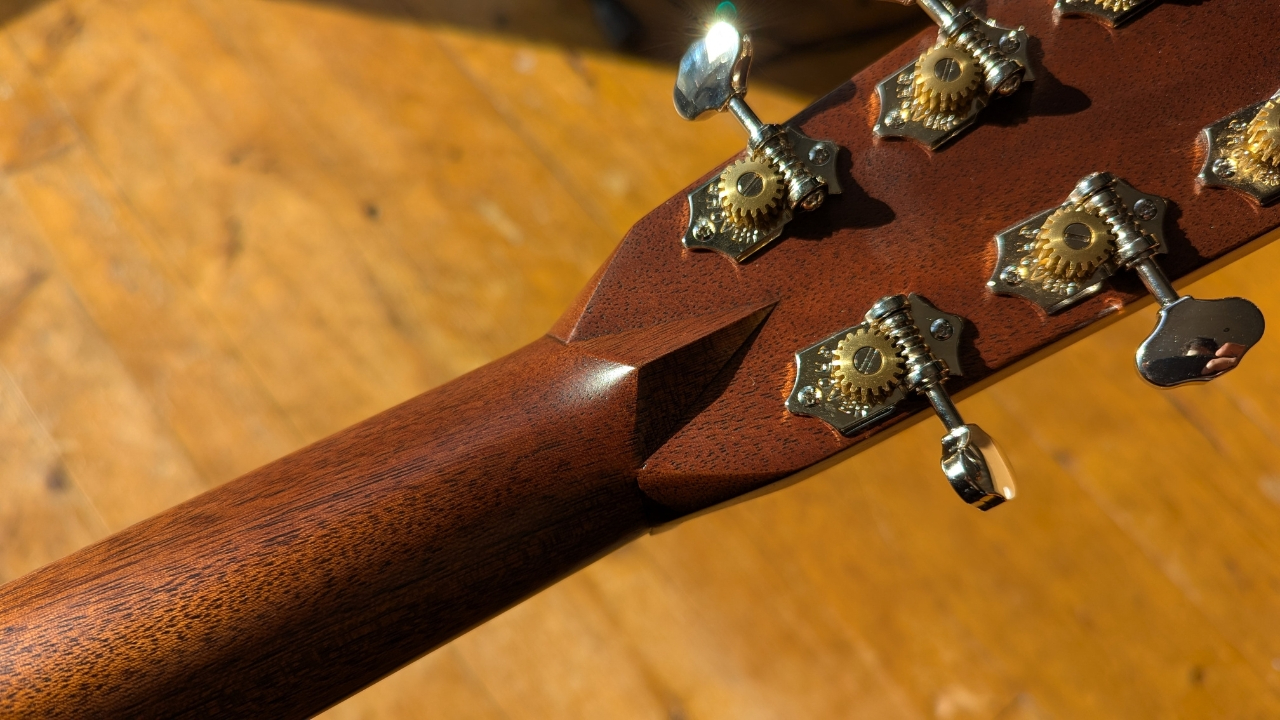
The Martin D-28 is what’s called a D-14 fret body shape, which means it’s a dreadnought-sized body, and the neck joins the body at the 14th fret. The top is made from solid Spruce combined with a back and sides constructed from East Indian Rosewood. It features a forward-shifted X-brace pattern, which is the structure that supports the guitar top. Forward shifted means it is closer to the soundhole than traditional x-bracing, which results in a more balanced sound.
My review model features the aged toner top in a gloss finish for an extra touch of vintage aesthetic, but it’s also available in full satin with the aged toner, as well as a satin Amberburst if you want something a little different.
Connecting the body to the select hardwood neck is a dovetail joint, which uses a dovetail-shaped protrusion on the neck with a corresponding recess in the guitar body. This is a classic acoustic guitar design and helps promote tonal transfer between the neck and the body. The fingerboard is constructed from ebony and features 20 frets with mother-of-pearl inlays.
On the back side of the neck, near the headstock, you’ll find the classic Martin diamond, often referred to as the ‘volute’ or ‘dart’. It was originally to give more stability to the headstock, but now it is just used for aesthetic purposes. Grover nickel open-gear tuners with butterbean knobs handle tuning duties, while a bone nut provides slots to guide the strings.
Moving to the other end of the guitar, you’ll find an ebony bridge with the traditional ‘belly’ shape. There’s a compensated bone saddle which is drop-in for easy replacement, and the white bridge pins feature faux tortoiseshell dots on them.
Build quality
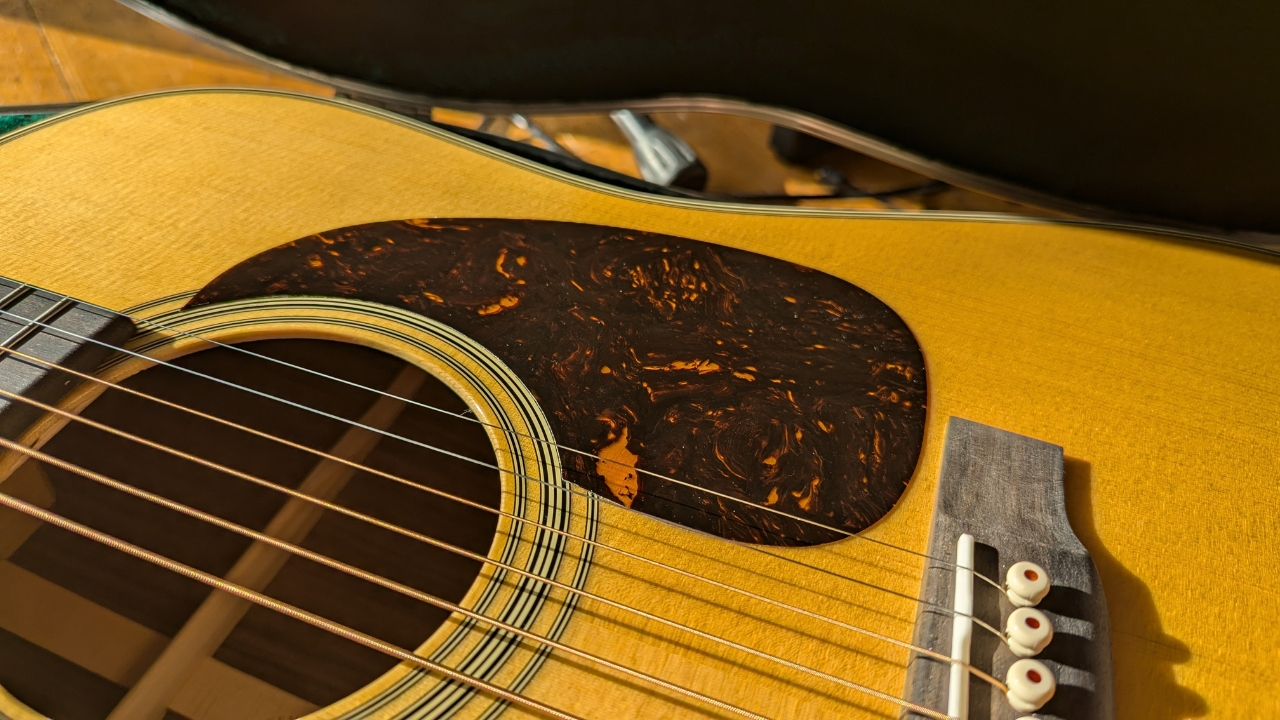
Examining the guitar in detail, I’m absolutely stunned by the attention to detail and overall build quality. A close examination reveals not a single thing out of place and despite its initially plain look in the case, the many tiny flourishes like the antique white binding and multi-stripe rosette are deftly applied.
I didn’t think much of it in terms of looks when I first laid eyes upon it, but the feel of solidity from the build and obvious care with which the guitar has been put together helped allay those initial misgivings. It even smells nice, with a woody fragrance apparent from the moment you open the case.
Playability
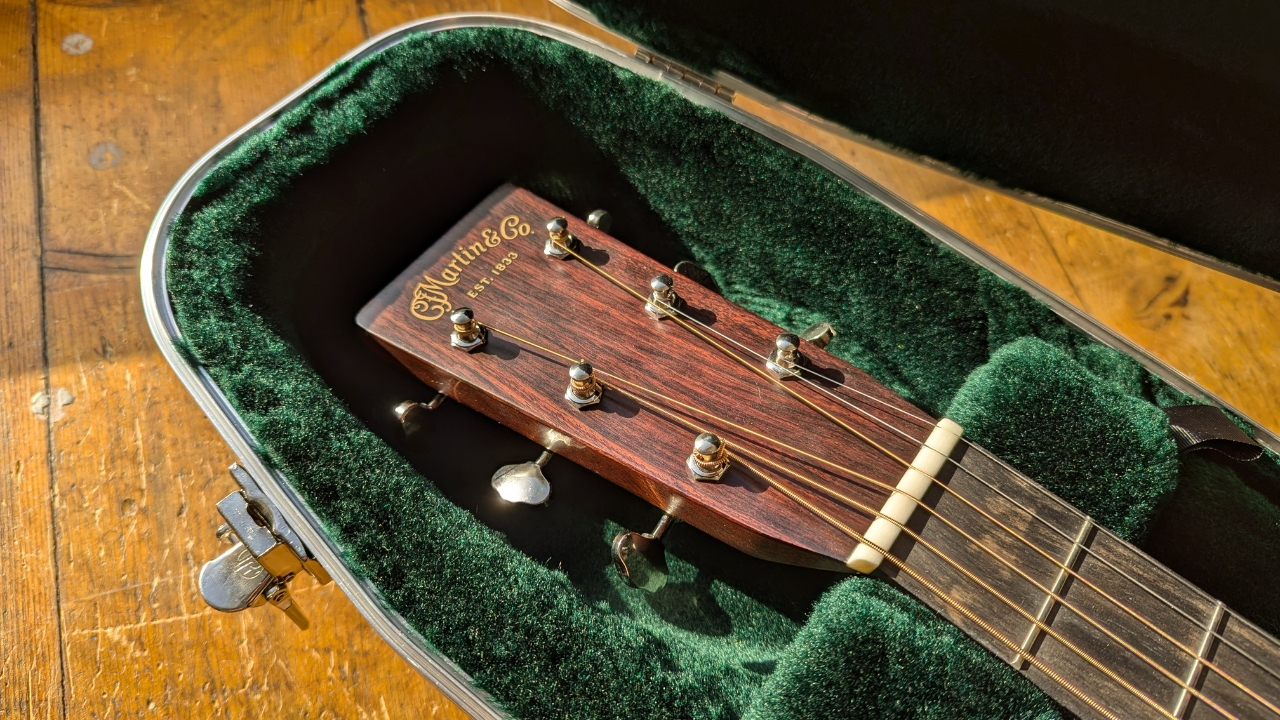
Sitting down to play, you can feel the soft ‘V’ of the neck straight away. Martin describes this profile as the Modified Low Oval. It’s immediately comfortable as I set about to some fingerpicking, my preferred style of play on an acoustic. I’d hesitate to call any steel string acoustic easy to play, particularly if you’re used to an electric guitar but once I got over the initial adjustment period, I had no problem fretting barre chords higher up the neck.
The string spacing is plenty comfortable for fingerstyle and my usual repertoire of pieces was easy enough to bring over from my classical guitar. Bending is certainly possible with a supporting finger or two, but you’d probably want to get a lighter set of strings if you’ve got your heart set on doing it regularly. Comfortable reach extends to around the 17th fret where the markers end, so there’s room for lead work if you like to add some flourishes to your chord playing.
The D-28 really thrives with a pick in your right hand. Open chords and arpeggios come with ease, and I had no trouble at all finding my way around the fretboard.
There are no body carves to speak of here so it’s not the most comfortable for long playing sessions sat down, but I’ve encountered worse guitars for this. The edge where your picking arm rests is slightly rounded off, and although the body itself is large, it’s not unwieldy. As with most acoustics, if you take your arm off the body it will neck dive, but overall I found it really nicely balanced when sat on my lap.
Sound quality

Playing the Martin D-28 for the first time is a formative experience. It’s an inspiring sound and I love the way it changes from warm and understated when fingerpicking gently to brash and loud when you strum hard with a pick. Its dynamic range is sensational and its sustain is unbelievably long. Chords ring out forever when you strike them hard and a gentler attack still rewards you with a nice ring.
The balance across the strings is lovely and even. The bass always feels present, but never overpowering while the high end never sounds harsh no matter where you are on the fretboard. Arpeggios ring out beautifully across the spectrum of high and low notes, always sounding even and articulate whether paired with open strings or not.
The D-28 continually surprised me with beautiful, unpredictable overtones while playing. It made my oldest acoustic licks sound totally renewed, bringing a richness and depth of tone that I had not heard in them before. I can totally see what so many legendary players see in it, and can see myself purchasing one in the future for recording duties.
Final verdict
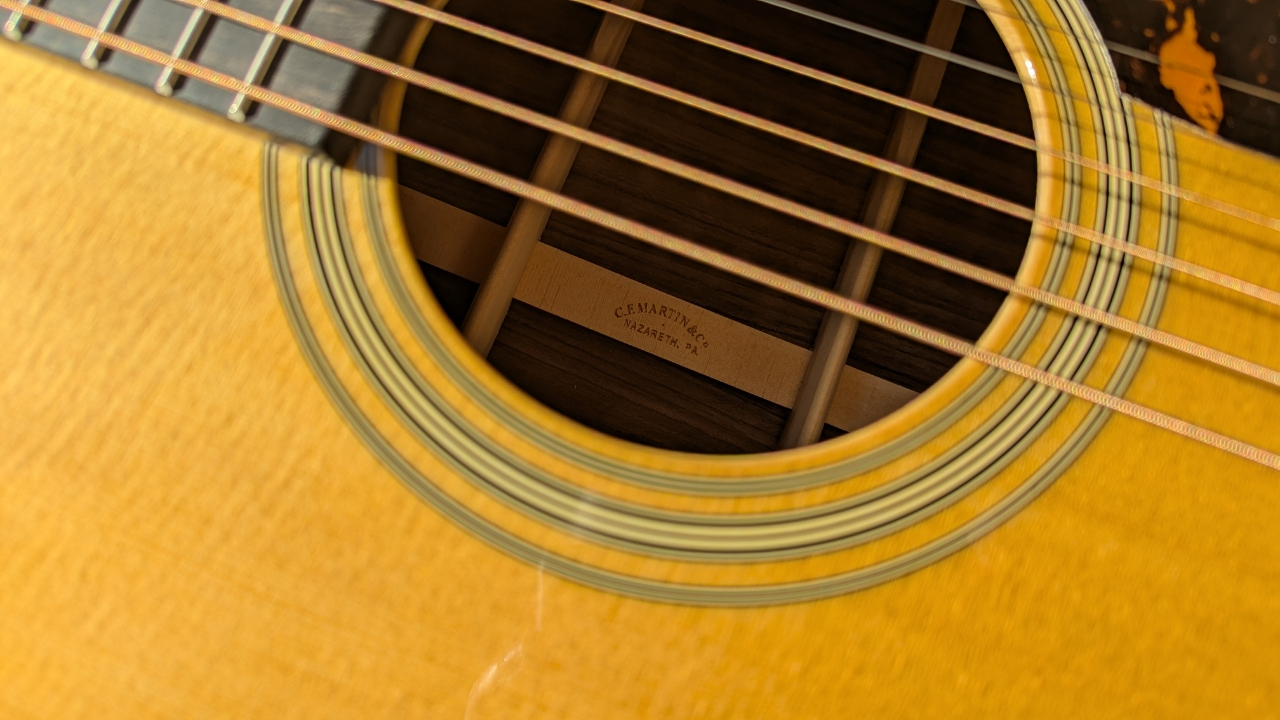
There’s a reason the Martin D-28 continually tops lists of the most famous acoustic guitars. It sounds incredible, is brilliantly put together, and delivers an inspiring playing experience.
It's an expensive guitar, no doubt. Still, for something that's handcrafted in the USA using only the finest of materials and with a story that goes back over 90 years, it's absolutely worth the money. For me, the D-28 is more than an acoustic guitar; it's a lovingly crafted slice of music history that's every bit as relevant today as it was when it was first introduced.
Specifications
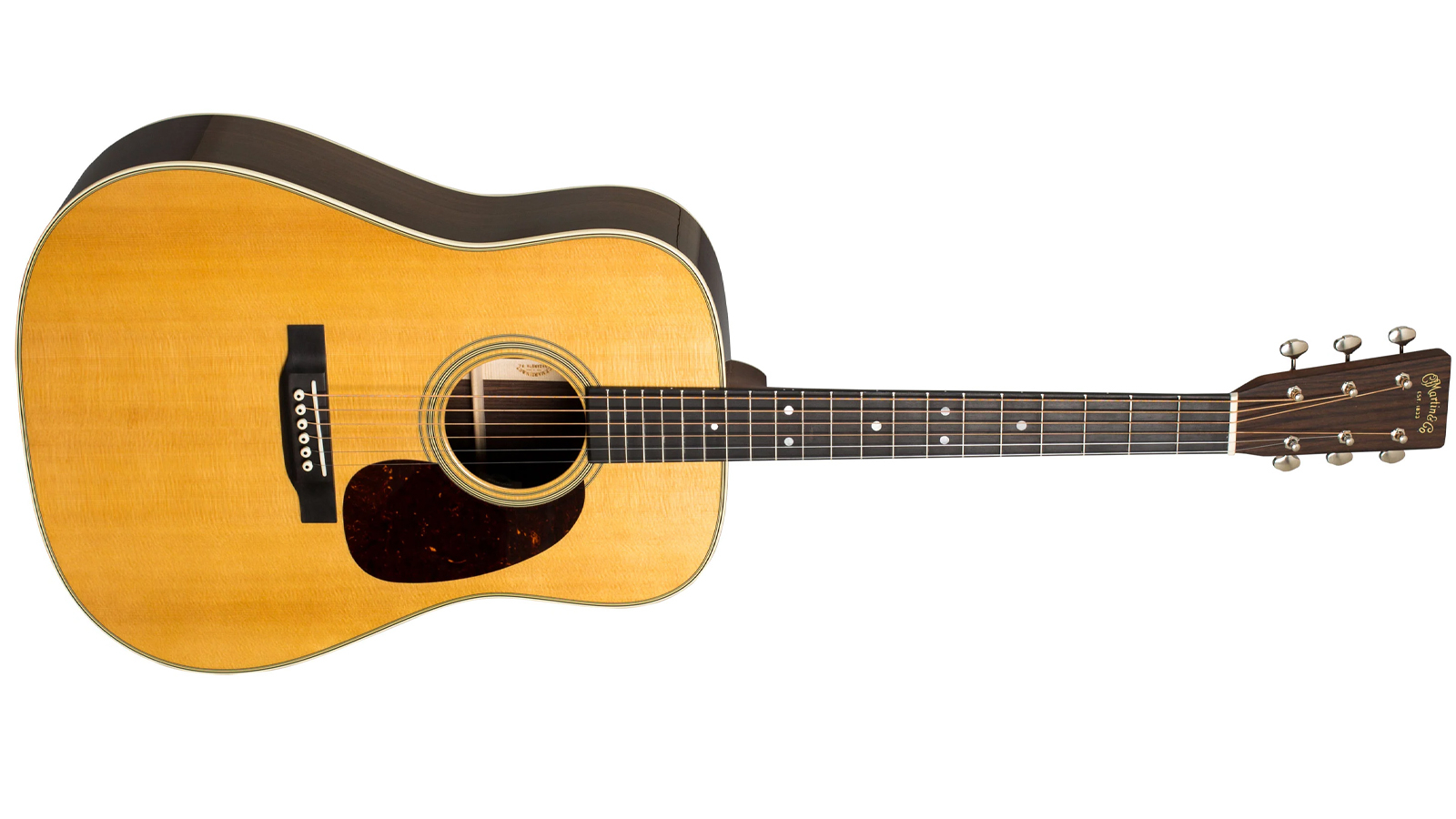
- TYPE: Square-Shoulder Dreadnought
- TOP: Solid Spruce
- BODY: Solid East Indian Rosewood
- HARDWARE: Grover nickel open-gear tuning machines, Ebony modern belly bridge with drop-in saddle
- LEFT-HANDED: Yes
- FINISH: Gloss Aging Toner (as reviewed) Satin Aging Toner, Satin Amberburst
- CONTACT: Martin







